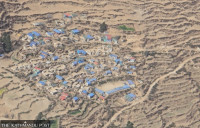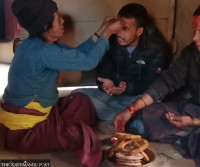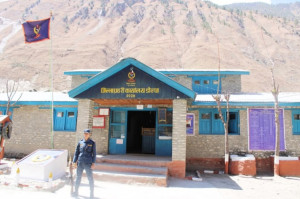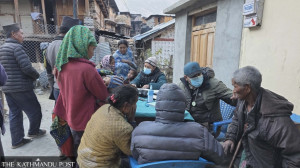Karnali Province
Dilapidated Salyan Prison overcrowded with inmates
The stone-and-mud building with four rooms shelters 129 inmates, including 22 women and three of their children.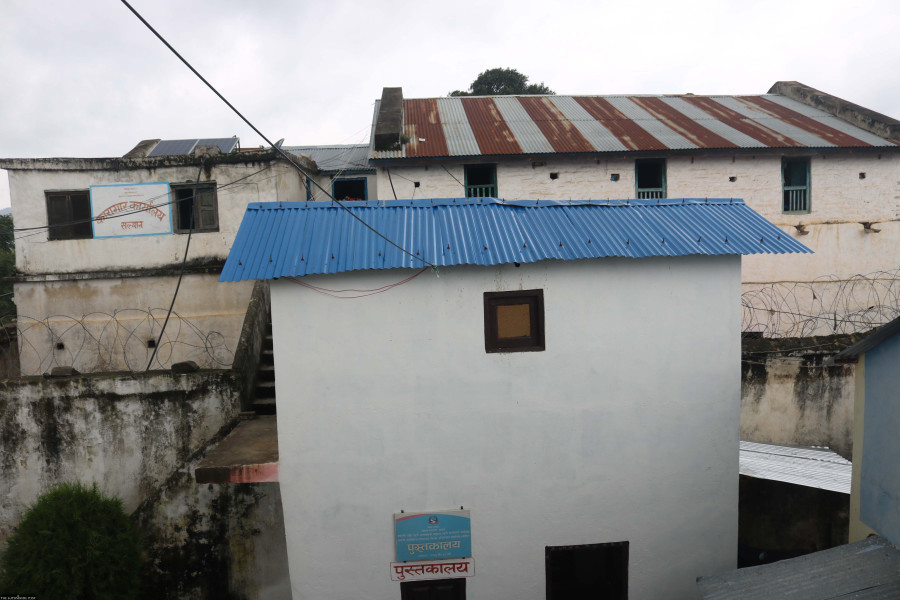
Biplab Maharjan
The building of the District Prison in Salyan, which shelters 129 inmates, including 22 women and three of their children, is in a dilapidated condition. The stone-and-mud structure was constructed around 168 years ago by a Salyani king.
“There are documents in the prison that show when the building was constructed but by which king, in particular, is not mentioned,” said Nimalal Bista, a guard at the prison.
“The building is ancient and we don’t know when it will collapse and bury us to death. The roof leaks and the supporting pillars have become weak,” said Bista. “The inmates and security personnel living here are always at risk of the roof falling over them.”
According to jailer Bal Bahadur KC, the federal government had allocated Rs 500,000 in the fiscal year 2015-16 for the maintenance of the prison building.
“We have not received any budget since then for maintenance and repair work,” said KC. “There are no immediate plans to construct a new prison building.”
The building, which was originally built to be used as a stable, has four rooms. The prison has a capacity of accommodating 25 inmates, including five women. But 104 male inmates, 22 female inmates and their three children are kept in the building at present.
“The prisoners have to sleep on the floor and on the passage since the prison is filled way beyond its capacity,” said Bista.
The dilapidated state of the prison building gives sleepless nights to the prisoners and the ones guarding them, says Komal KC, who is serving a jail sentence at the prison.
“Even a mild earthquake will bring this building down. It will leave no survivors,” he said. “The concerned authorities have left us here and forgotten about us. They must take some measures to make the prison safe and habitable.”
Congestion and unhygienic living conditions at the prison can lead to the spread of communicable diseases, putting more than a hundred of its occupants at health risk.
“We are very prone to various communicable diseases as the prison is overcrowded. We don’t have any space to exercise or live a healthy life,” said KC.
The prisoners blame the jail administration for its indifference to resolve the problems faced by the inmates.
“The prison administration has been reluctant to address our demands for a long time. Twenty-two prisoners live in one small room. We cannot even sleep well,” said Jayanti Hamal, a female prisoner.
The situation of the district prison in Rukum (West) is also the same. The prison building built some 33 years ago houses six times more prisoners than its actual capacity.
The prison building has the capacity to accommodate 20 male and five female inmates. But it currently houses 150 inmates, including eight women and two of their children, according to the acting Chief District Officer of Rukum (West) Pramesh Shiwa.
“Offenders from Rukum (East), which lies in Lumbini Province, are also brought to the prison in Rukum (West) since the former does not have its own prison,” said Shiwa.
Surkhet Prison in Birendranagar also shares a similar ordeal. The prisoners were recently shifted to a new building but the building is not spacious enough to house all the prisoners. The new building has the capacity of keeping 100 inmates but there are currently 364 prisoners, including 44 women and their five children.
“The prison building is not big enough to accommodate such a large number of prisoners,” said jailer Laxmi Kharel. “Many inmates have to live in a congested room.”
(Hari Gautam in Rukum (West) and Chandani Kathayat in Surkhet contributed reporting.)




 6°C Kathmandu
6°C Kathmandu

